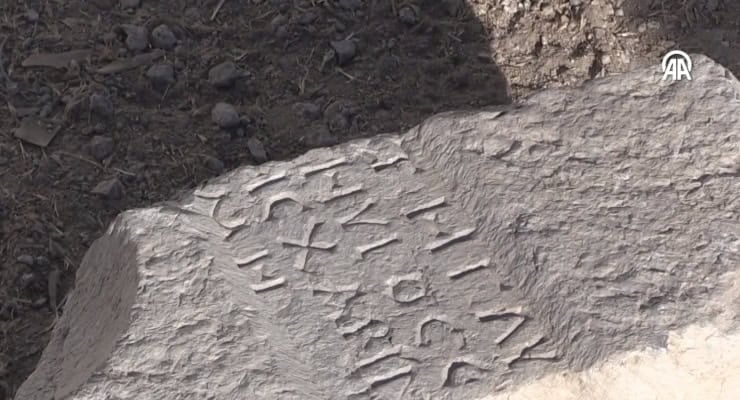Three inscriptions found in the ancient city of Sebastapolis

The ancient city of Sebastopolis was separated from the Pontus Galatius and Polemoniacus provinces between 98-117 AD and was considered one of the five largest cities of the Black Sea during its period.
The ancient city of Sebastopolis, where money could also be minted, is considered a wealthy city of its time.
Excavations in the region, which began in 1987 and were suspended in 1990, resumed in 2010.
Part of the ancient city in the Sulusaray district was unearthed during these excavations. The residents of the district, with a population of 3,500, live in close proximity to the ancient city.
This year's excavations at the ancient city were carried out by Prof. Dr. Davut Yiğitpaşa and his team from the Archaeology Department of the Faculty of Humanities and Social Sciences at Ondokuz Mayıs University.
What has been found in the excavations so far:
An apsidal structure with a mosaic floor featuring vegetal, geometric, and figurative decorations dating back to the Late Roman and Early Byzantine periods; a Roman-era city wall and bathhouse; a church and tombs from the Byzantine period; a column; a pedestal; a column capital; a pithos; architectural elements; brick fragments; a lion-headed marble table leg; coins from various periods.
Small finds
Yiğitpaşa also stated that efforts were being made to unearth the church during excavations, and continued:
"Our goal is to complete its restoration and open it to tourism. We also found small findings during these excavations. We found three inscriptions during the excavations. One of them is a tombstone. Our work on these is still ongoing. We will analyze them."

Yiğitpaşa, who said that one of the inscriptions was a tombstone that they thought belonged to a young child, explained:
"It says 'the sweetest.' From this, we understand that a family had lost their young child, and those phrases were used at the time. It expresses compassion and love. We can say that it is a Greco-Roman inscription. Our second inscription is an honorary inscription. One of them, although in faded writing, mentions the name of the city. The city's name is broken, so it couldn't be understood. It mentions the name Nektaton. It could be a name related to belonging."
Stating that the name of Constantine I was mentioned in the third inscription, Yiğitpaşa said, "The inscription can be dated to the beginning of the fourth century. There is the phrase 'Constatine the Invincible'. This is also important for us."
SÖZCÜ




